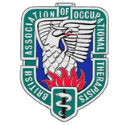Proprioceptive System
The proprioceptive system refers to components of muscles, joints, and tendons that provide a person with a subconscious awareness of body position.
When proprioception is functioning efficiently, an individual’s body position is automatically adjusted in different situations; for example, the proprioceptive system is responsible for providing the body with the necessary signals to allow us to sit properly in a chair and to step off a curb smoothly.
It also allows us to manipulate objects using fine motor movements, such as writing with a pencil, using a spoon to drink soup, and buttoning one’s shirt. Some common signs of proprioceptive dysfunction are clumsiness, a tendency to fall, a lack of awareness of body position in space, odd body posturing, minimal crawling when young, difficulty manipulating small objects (buttons, snaps), eating in a sloppy manner, and resistance to new motor movement activities.
Another dimension of proprioception is praxis or motor planning. This is the ability to plan and execute different motor tasks. In order for this system to work properly, it must rely on obtaining accurate information from the sensory systems and then organizing and interpreting this information efficiently and effectively.





